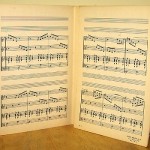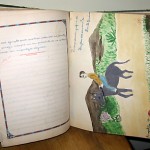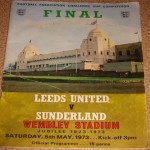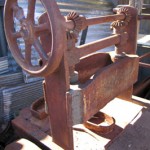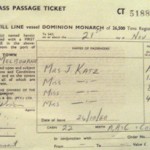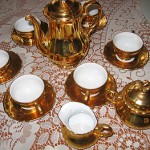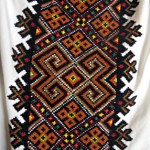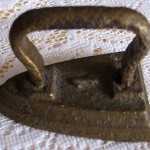(nee Giacosa)
Uruguayan
Montevideo, Uruguay
Montevideo, Uruguay on 11 January 1970
Sydney Airport on 13 January 1970
Heathcote Road and East Hills for six months
Rental property at Belmore in SW Sydney
Factory work at Polyfloor in Belmore.
Administration at School of External Studies; restaurant guitarist; Spanish teacher at UNSW; counsellor for Liverpool Women’s Health Centre.
I was born Angelita Giacosa Vilarrubi on 25 March 1944 in Montevideo, which is the capital city of Uruguay in South America. My father was a musician who began playing the violin at the age of 13, but his main profession was that of boot maker. He had his own shop where he made boots and it was the only shop in Montevideo at that time which did so. The boots were of all types. He made them for factory workers, cowboys, polo players, the army and everyday people. Even the Uruguayan presidents bought their boots from him. He only made boots though and not shoes. One of my belongings that I have is a miniature leather boot all handmade by my father and perfect in every detail. It is only about four inches tall and used to sit on a rotating platform in the shop window. It was actually a sample of what he could make.
My mother was trained to make clothes and hats for women but she only made them for family members. At that time, women wore hats whenever they went out. Her time was made up looking after me and I was the only child, born after eight years of marriage. We lived with my grandparents in a very large house with my father’s shop in front. It had patios and was two storeys high.
I still have a school book – I did the work when I was in fourth class and about nine years old. We used loose leaves to do our exercises and at the end of the year my teacher would bind all the pages together and give them to us. It is most important to me as it is a memory of my childhood in Uruguay.
I was also learning English for 12 years from the age of eight. At the end of my schooling I did a three day exam which was sent to Cambridge in England for marking. The course included language and modern and classic literature. The certificate I received qualified me to teach English. I taught at home and had 78 students in various groups.
A family who were migrating to Australia were my pupils. They showed me brochures and photos of Australia and, as things were bad in Uruguay, my husband and I decided to migrate to Australia as well. In the end we came with [this] family and also stayed in the same [migrant] hostel.
I met my first husband when I was 13 and married him at 18. Uruguay was in a state of turmoil politically and many people were ‘disappearing’. We saw young people who had been tortured and we did not want our children to go through that. We had two daughters and had to think of their safety. We had been very happy in Uruguay and the children were too, but we made our decision to leave and sadly that included leaving my parents. A short time after we left Uruguay, the police came looking for me as I had kept books, poetry and music that were in protest and considered as ‘illegal’ by the government. By then we were gone and had we remained, I would not be speaking here now.
My favourite possession which I brought from Uruguay is a music book of my father’s brother, Caesar Giacosa. It was passed to me and is most important as my uncle was a professor of music and a tenor in Montevideo Cathedral, where he was also the choir master. This is one of his actual handwritten music books completed in Indian ink. Music has always been very important to my family as my great-grandfather’s brother was Giuseppe Giacosa, the Italian musician who wrote the libretto for some of Puccini’s operas such as Madame Butterfly, Tosca and La Boheme.
From Uruguay I also brought a doll that I have had since I was six. On 6 January in Uruguay, the Three Wise Men bring presents to the children, just as Santa Claus does here. [They] brought me this doll. It is made of a type of rubber and its clothing was made by my mother. It is most important to me and I would never part with it.
From Montevideo we flew to Los Angeles, then to Tahiti on a Pan Am flight. We arrived in Sydney on 13 January 1970. It had been decided that we would remain in Australia for two years and then if things had improved in Uruguay, we would return. It was very sad to leave my parents but we had no choice and Uruguay was to suffer many more years of conflict.
The flight was very good and the children, who were aged six and three, were very excited. The migration books had shown lots of sunshine and lovely hostels and we were arriving in summer, so there was not to be a great change in climate for us. We were assisted migrants and my husband was a fitter and turner so would most probably be readily employed.
On our arrival at Sydney Airport, we were directed to a bus which took us to Heathcote Road migrant hostel [in south-west Sydney]. We were all Spanish-speaking, mainly from Uruguay and Chile, and I was the only person who spoke English. I spent a lot of time translating in the time I was there.
Our new ‘home’ was quite a shock as we were allocated a Nissen hut. We called them ‘tins’ but I thought that we would have to make the best of it and it would not be forever. This was only the beginning. It was primitive though and the toilets and bathroom were away from our hut. Some of the women used the bathtub to clean fish that their husbands had caught in the river and we had to clean out the bath before we could bathe the children.
I soon asked for a transfer and we were then sent to East Hills hostel [nearby] where things were a lot better. We had inside toilets and bathrooms there. We were not supposed to cook in our room though but we managed to get around it somehow on occasions. We became used to Australian food and the kids learnt quickly to love Vegemite.
We were at East Hills for six months. I was used a lot as interpreter because not only did I speak Spanish and English but I could also understand Italian. This led to my first job in Australia. The manager of the hostel saw that I was being used by the migrants to help them and he asked me if I would consider working for Commonwealth Hostels in the same capacity. I would go with migrants to hospitals when they needed someone to speak English and I would help them make purchases and lots of other things.
Then we moved to live in Belmore. Later we moved to Campsie. Some parts of this time have been blocked from my memory because it was at this time that the marriage was falling apart.
I found a factory job for the first time in my life and worked at Polyfloor in Belmore. The company made vinyl floor tiles and it was indeed hard work, especially as I had been a teacher in Uruguay. I did not tell my mother as she would have been very upset that her daughter was working in a factory.
We were in Australia two years when the marriage finally ended after much violence and an expensive court battle. I wanted to keep the kids and that meant that I had to pay the court expenses and be able to support them well. I worked two jobs to do so. One was with the College of External Studies, where I dealt mainly with correspondence, and in the evenings I played my guitar in a local restaurant. Within three and a half months I was able to pay for my solicitor and be awarded custody of the children.
Sometime later I met the man to whom I am now married and we are very happy. We have a son who was born in 1974.
I have had a few jobs since coming to Australia. From 1985 to 2002, I worked at Liverpool Women’s Health Centre as a counsellor, which entailed not only counselling but running groups. The groups were such things as self-esteem, personal growth, stress management, grief and loss. I retired from there six years ago. Previous to that I worked at the University of New South Wales teaching Spanish. I did voluntary work such as meals on wheels and I am now involved with the Salvation Army. I also teach English to migrants in Fairfield.
My mother came to live with us after my father passed away in 1978 and she stayed with us until she died at the age of 95. I have returned to Uruguay on a few occasions but would never return there to live. I have been here too long now and all I need in life is here. We have worked hard and now is the time to reap the harvest. We are a close family, full of love and respect and now I am also enjoying my grandchildren as well as my retirement years.





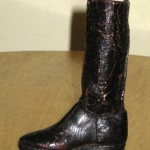
!["I also brought a doll that I have had since I was six. On 6 January in Uruguay, the Three Wise Men bring presents to the children, just as Santa Claus does here. [They] brought me this doll. It is made of rubber and its costume was made by my mother."](../../../cms/wp-content/uploads/2010/01/gomez-doll-150x150.jpg)
